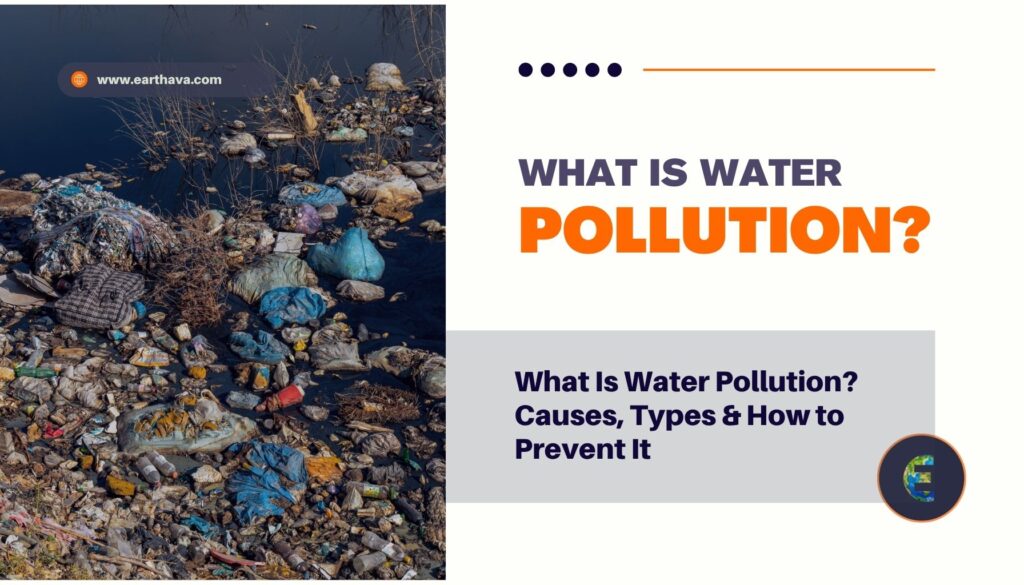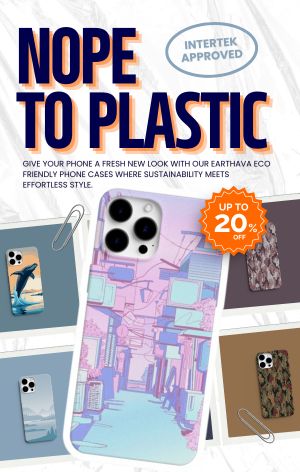What is water pollution? It is any time a water source experiences a depletion in quality or some type of contamination. Sometimes the pollution comes from a natural catastrophe like a flood or landslide.

What would you do if you only had 7 days left to live?
The average human body can survive up to 3 weeks without any food. Yet, 7 days is the longest amount of time you can stay alive without drinking water.
We need water to live, function, and enjoy our lives. Every day, the average American uses 80-100 gallons of water.
Even though the world depends on water to survive and function, we aren’t doing enough as humans to keep our waterways safe. Toxic pollutants are contaminating water sources and causing irreversible damage to our health and environment.
What is water pollution? Read on to find out more about what’s polluting our waterways and how you can stop it.
Earth’s Water Sources
Did you know that water makes up 71% of the Earth? Before we can answer the question, “what is water pollution?”, let us explore the different water sources. Specifically, we’ll be discussing the water sources that are most susceptible to pollution.
The 3 main sources of water are:
- Surface Water
- Atmospheric Water
- Groundwater
Oceans, lakes, streams, and ponds are all types of surface waters. Ocean waters hold about 96.5% of all the water found on the planet.
The water that lies beneath the surface, or groundwater, spreads throughout the entire globe. However, a lot of the groundwater is too far down into the Earth to be accessible for human use. Out of the 6 quintillion gallons of groundwater on the planet, only 6% or less is close enough for us to use.
Finally, water is also found all around us in the air. Moisture, water vapor, precipitation, snow, and more all exist in the atmosphere. These atmospheric water sources are crucial for helping life flourish.
When any of these 3 water sources experience pollution, the entire planet suffers.
What Is Water Pollution?
Water pollution occurs any time a water source experiences a depletion in quality or some type of contamination. Sometimes the pollution comes from a natural catastrophe like a flood or landslide.
However, floods and landslides aren’t the only ones wreaking havoc on our water quality. Human activity is one of the biggest contributors to water pollution worldwide.
Water pollution, similar to air pollution, is a global problem. To join in on the fight for a cleaner and healthier planet, you have to understand where the problems are originating from.
While there are countless types of pollutants, you can categorize them into two main categories. Some pollutants come from germs, and those that come from chemicals.
Water pollutant categories:
- Germs
- Chemicals
Let’s look at how germs enter our waterways and how they affect the environment.
Germs in Our Water
Germs are a type of bacteria, and they exist everywhere. It’s natural for our water sources to have a lot of these tiny microorganisms floating around.
Good bacteria help us stay alive every day and may even be a future source of fuel. However, when humans pollute the waterways, they introduce bad germs that can cause disease and infections.
So, how do germs enter our waterways? Sometimes germs are present from natural causes, like animal waste or other environmental factors.
However, other times, it’s human waste and raw sewage that’s contaminating the waterways. Untreated sewage can enter water supplies either by accident or on purpose.
For example, when a septic unit leaks or becomes flooded, infectious germs enter the waterways. Other times, companies intentionally use waterways, like rivers or lakes, as a dumping ground for raw sewage.
Dumping sewage and human waste into rivers causes harmful pollutants to enter the water systems. Infectious germs and bacteria exist in human waste and can seep down into the groundwater supply.
Effects on Human Health
When people drink contaminated water, they are at risk of contracting life-threatening diseases. Direahheal diseases like cholera, typhoid, and dysentery all live in dirty, polluted water.
To make matters worse, these diseases dehydrate you. Individuals who are only surrounded by contaminated water won’t be able to rehydrate and regain their health. Without proper treatment, individuals with sicknesses like cholera can die within a matter of hours.
Waterborne diseases claim the lives of 3,575,000 people every year. Many of the lives lost are those of young children.
Lives are also being lost from chemicals entering the waterways. Let’s look at how chemicals get into the environment and the effects they can have.
Chemicals Entering Our Waterways
Chemical pollution can occur from household products entering water systems. Household products like soap and laundry detergent can be detrimental to the environment.
Chemicals can also enter our water sources from pesticides and fertilizers. Farmers using the pesticides will occasionally have a certain amount of run-off into the water. Runoffs pollute the water and poison the existing plant and animal life.
Heavy metals and petroleum are two more chemical sources that degrade water quality. Heavy metals and solvents are usually found in industrial work settings. While petroleum typically only enters the environment through accidental oil spills.
Effects of Chemicals on Our Environment
Companies that use harmful pollutants aren’t seeing things from the environmentalist’s point of view. When one part of the environment suffers from pollution, the entire ecosystem suffers.
Did you know that humans who live near the runoffs are at risk of eating contaminated fish? Even if the fish didn’t directly consume any of the pesticides, they still may have been eating poisoned plants. Not only are humans at risk, but so are birds and other natural predators who feed on the fish.
Oil spills are particularly tragic to the surrounding plant and animal life. Many fish instantly die because they are unable to survive in the oil-filled waters. Nearby birds become unable to fly as their feathers are stuck together by the thick layers of oil.
Sometimes, the negative effects of chemicals take more time to show up. For example, people who live near a heavy metal runoff might not notice the impact the metals are having on the environment.
However, over time, the poisonous chemicals will slow down the development of aquatic life. Some aquatic life may even be infertile, endangering entire species of fish.
Plastic Waste
Another threat to both the water and aquatic life is the plastic waste dilemma.
Plastic is saving many businesses money by offering them cheap packaging alternatives. Over the years, it’s grown in popularity as a fast way to disperse goods.
Here are a few plastic products that are popular and harmful:
- Plastic Bags
- Water Bottles
- Styrofoam Cups
- Soda Can Rings
How are these products hurting our water and aquatic life?
Impact on the Environment
Plastic bags aren’t eligible for standard recycling programs. As a result, landfills are becoming overstuffed with massive amounts of plastic bags. Styrofoam cups are also wreaking havoc because the Earth has a difficult time helping them decompose.
A lot of the plastic waste finds it’s way into the ocean. By the year 2050, studies show plastic waste will outweigh all of the fish in the sea.
Unfortunately, fish ingest plastic products. The digestion of plastic waste can cause intestinal injuries and death. Sea turtles are also frequent victims of strangulation from plastic rings.
When the plastic pieces break into smaller pieces, they release toxins. The toxins can then find their way into drinking water sources.
Lead, cadmium, and mercury are all types of toxins found in plastic. Different levels of these toxins can lead to health complications such as cancer.
Ways You Can Help End Water Pollution
Now you know the answer to the question, “What is water pollution?”. You might be wondering how you can help protect the environment’s water supply.
There are small changes you can make today that will instantly minimize the pollutants your household is contributing. For starters, you should find ways to limit your use of pesticides and fertilizers.
You can also make a difference by paying close attention to the chemicals you’re using in your laundry room. When washing your clothes, limit the amount of detergent and other cleaners you add to the load.
Every small step you take to help the environment has a major impact worldwide. Earthava wants to help people learn about ways they can protect the environment.
We are on a mission to help stop pollution by starting important environmental conversations. Check out our latest article about what we can learn from the water crisis in Michigan.


